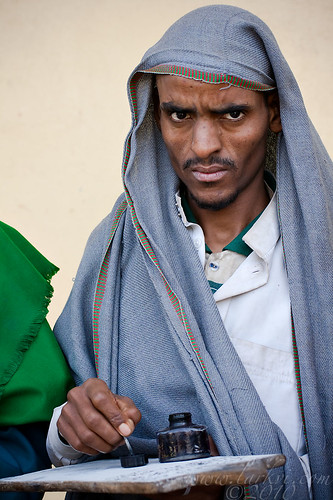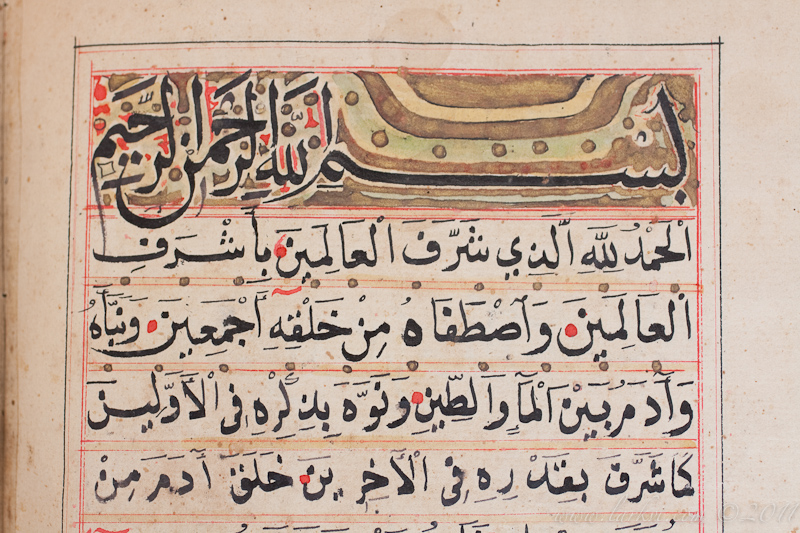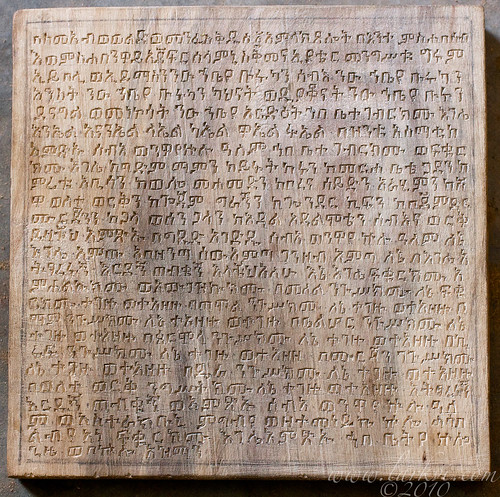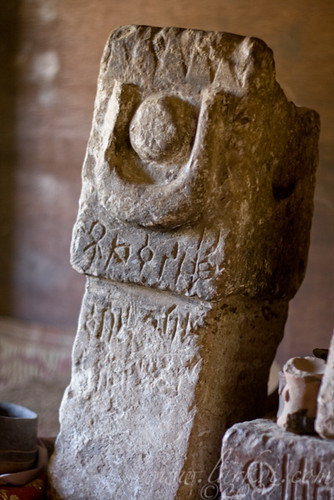
Other Writing in Ethiopia
Islamic Writing
About a third of Ethiopia's people are Muslim, and the writing of Arabic is taught at mosques and Islamic schools. In the photo to the right, an instructor demonstrates writing with an ink-covered stick on a traditional clay-covered wooden writing board, called لهوخ louh. When photographed, he was leading a school of students in writing practice at the main mosque in Gondar.

Harar
Facing away from the highlands of Abyssinia and towards the Arab world, Harar, a former Muslim Emirate in the East of Ethiopia, produced manuscripts in a fundamentally Islamic style. Harari books are written on paper, and bound in leather covers with a flap. Though the Harari lanugage is currently written using Ge'ez chanracters, it was historically written using the Arabic alphabet, as an ajemi language. Many religious books, books of songs, and medical/medico-religious texts in Arabic and ajemi languages are preserved in family collections, shrines, and at the Sherif Harar City Museum. Harari coinage also had writing on it; notably, Harar was the only state in the Horn of Africa country to produce coinage after the end of Aksumite coin production and before the issuance by the modern state.

Writing on Wood
This is an example of a magical charm or prayer which has been carved into wood; it is supposed to bring money into the household that it is stored in.

Epigraphic Inscriptions
Ancient inscriptions on stone are known in the North, from both the Sabean and Aksumite civilizations. In the South, carved stones exist with images though not writing.
Sabea
The Sabeans ("Shebans"), a civilization centred in South Arabia (modern Yemen) had a significant presence in the areas of Northern Ethiopia and Eritrea in the first millenium B.C.E.. They left their ruins, and their writing--on which the Ge'ez alphabet is based--behind them when they left. The image on the right shows a typical Sabean symbol, the moon and sun, with writing below.
Aksum
The Aksumite civilization existed in the area of Northern Ethiopia and Eritrea, centred upon the capital city of Axum and the port city of Adulis. Inscriptions exist in Ge'ez, Greek (the trade language of the Red Sea), and Sabean (which was likely used in religious ritual before the conversion to Christianity in the 4th century C.E.).

